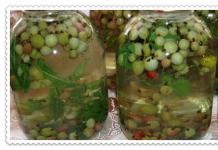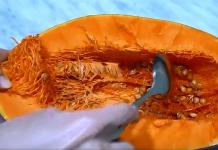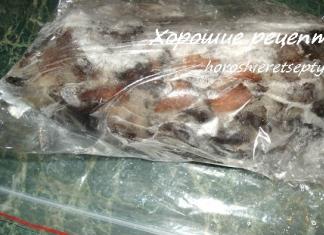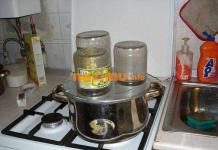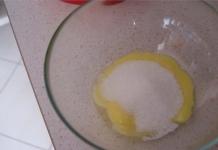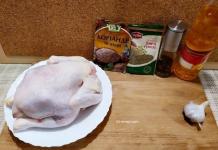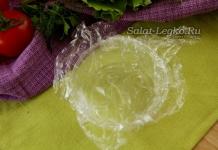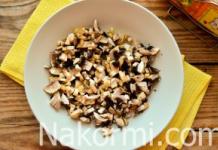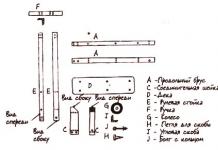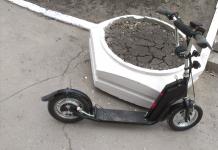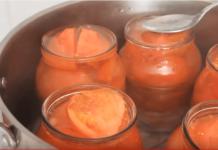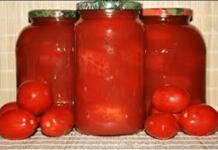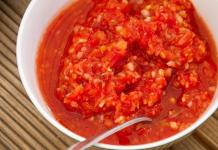It is no secret for experienced growers that good, healthy seedlings are 80% successful in obtaining a high-quality crop. Growing tomato seedlings has its own characteristics, and no matter how well you prepare the soil mixture for sowing tomatoes for seedlings, the lack of timely fertilizing will not make it possible to grow good seedlings.
Feeding tomato seedlings at home must certainly be carried out taking into account the phases of plant development.
The seed carries the stock nutrients However, it has been experimentally proven that by feeding it, we get healthier seedlings and more abundant harvest. Presowing treatment is a part of tomato dressing. The composition of the seed treatment solution must certainly include both nutrients and trace elements. To prepare the solution, it is necessary to dissolve in 1 liter of water: 0.3 g of ammonium nitrate, 0.3 g of superphosphate, 0.5 g of zinc sulfate, 0.03 g of boric acid, copper sulfate, manganese sulfate and molybdenum-acid ammonium. It is enough to soak tomato seeds with this solution for 1-2 hours.
Sowing of seeds is carried out, as a rule, in an earthen mixture prepared in advance, filled with organic and mineral fertilizers. But if the sowing took place without enriching the soil, then top dressing must be started already from the opening phase of the cotyledon leaves. At this moment, the tomato starts feeding on its own roots and because of what exactly it consumes, the start in the growth of the tomato depends. At this point, the most important elements are nitrogen and phosphorus. Without waiting for the phase of the appearance of the first true leaf, the seedlings must be watered with a solution of the complex fertilizer "Uniflor-growth", "Solution", "Kemira-Lux", it is enough to dissolve 3 g of the drug in 3 liters of water for irrigation. During this period, it is necessary to increase the illumination of the seedlings, since the assimilation of those elements that we have introduced into the nutrient solution will depend on this.
 If the seedlings are grown without picking, then further feeding is carried out 15-17 days after the first, it is carried out selectively, depending on the state of the plants or completely. To prepare the nutrient solution, you will need a teaspoon of ammonium nitrate, 2 teaspoons of potassium salt, and one tablespoon of superphosphate. All this must be dissolved in a bucket (7 l) of water. It is more expedient to replace potash salt with ash, but in a double dose. Such a replacement will enrich the seedlings with trace elements.
If the seedlings are grown without picking, then further feeding is carried out 15-17 days after the first, it is carried out selectively, depending on the state of the plants or completely. To prepare the nutrient solution, you will need a teaspoon of ammonium nitrate, 2 teaspoons of potassium salt, and one tablespoon of superphosphate. All this must be dissolved in a bucket (7 l) of water. It is more expedient to replace potash salt with ash, but in a double dose. Such a replacement will enrich the seedlings with trace elements.
Fertilizing tomato seedlings after picking is carried out with the same solution, but not immediately, but 10-15 days after the process itself, giving the plant the opportunity to adapt.
Recently, feeding tomato seedlings after picking with yeast has become more and more used by summer residents. The effect of it is obvious. Seedlings are leveled in growth, becoming stocky. For feeding, it is enough to dilute 20 g of yeast in 1 liter of water, let the solution stand in a warm place, and then dilute everything again in 5 liters of water.
Tomato seedling feed folk remedies is gaining more and more intensive momentum. Extract from soaked green herbs and nettles, sourdough from stale bread, vitamin C and sugar solution, beer solution and dandelion decoction. Whatever the amateur vegetable growers come up with. However, none of these methods have been adopted by official agronomy, and probably not because they are not useful, but because they are simply not very effective.
Tomatoes consume many nutrients from the soil during any period of their growth. The first feeding of this culture is carried out at the stage of growing seedlings. Moreover, it is not recommended to skip this dressing, otherwise, it will negatively affect the growth of the bush in the future.
Why feed seedlings
Before moving on to specific tips and tricks on how to carry out tomatoes at home, consider the reasons why it should be done at all. Seedlings, in fact, are grown initially in fertile land specially prepared for this. When choosing a soil for sowing seedlings, it must be breathable, with good texture. In such soil, tomatoes will grow without fertilization, but not as strong and not as fruiting as when using top dressing.
Initially, tomato bushes actively grow due to the fact that they have enough substances that are inside each seed. But this is only the first time, and the further development of young shoots requires more and more nutrition. When starving, the seedlings will stop growing, they will be weak and lethargic. So, feeding, correct and on time, is required.
When to fertilize tomatoes
The first feeding is carried out after the seeds have sprouted and the sprouts have grown stronger, and after that two real, not cotyledonous leaves will appear. Some gardeners believe that the first fertilization should be carried out 15 days after the pick, but it all depends on how much fertilization each bush will have in the future.

So, the second stage of fertilization will be during the period of transplanting seedlings into fertile soil. It is best to buy land specifically for growing tomato seedlings. In this case, 1-2 dressings will be enough in the spring. Then fertilization is carried out ten days before the planned date of planting the plants in the greenhouse or in open ground.
Note! Seedlings of tomatoes, like other garden crops, will always actively respond to what elements it lacks or what is in excess. For example, if there is a lack of nitrogen, then the leaves become lethargic, turn yellow and crumble.
It is important not to confuse the symptoms of a lack of certain substances in the soil with unfavorable conditions for growing seedlings. Most often for these red fruits, this condition will be low temperature and over-watering. If the plant has a bright characteristic purple tint down the stem or on the outside of the leaf, this indicates a lack of phosphorus. The lack of iron in the soil manifests itself as green veins, which have become very noticeable due to the fact that the leaf has become light.

What fertilizers to use
On the video you can find a lot of information on how to feed tomato seedlings at home. But we will consider the main methods and compositions later in this detailed material. Any ready-made fertilizer is suitable for tomatoes. Feel free to buy "Nitrofoska", "Agricola-Forward", as well as "Agricola No. 3".
If you want to make fertilizers for tomato seedlings yourself, pay attention to the following composition:
- A gram of urea is mixed with 8 grams of superphosphate, add three grams of potassium sulfate. All this is diluted in two liters of water.
- In a liter of water, you can place 0.5 grams of ammonium nitrate, four grams of superphosphate, add one and a half grams of potassium sulfate.
Some gardeners believe that chemical fertilizers are never suitable for their tomatoes. In such a situation, you can use a variety of folk remedies. For example, it can be ash extract, yeast, or even banana peel. How exactly is feeding tomato seedlings at home with ash and others folk methods, we will consider further.
Yeast based fertilizer
For five grams of bread yeast, five liters of water are taken. Dissolve yeast in water and mix everything. Infuse fertilizer for 24 hours, and then feed the seedlings. This fertilizer cannot be stored: water as soon as it is ready.
Ash-based fertilizer
A tablespoon is diluted into two liters of water wood ash... Insist on feeding tomatoes during the day, be sure to drain the sediment, and strain the liquid itself.

Fertilizer on bananas
You will need to take two-thirds of your usual bucket of dry banana skins. You also need a liter of water. Insist all three days in a warm place. Before starting feeding, dilute the mixture three times with water.
Eggshell fertilizer
You will need to dilute two-thirds of a regular eggshell bucket in a bucket of water. To make the fertilizer, you need to infuse the mixture for up to four days, closing it with a lid. By the way, will appear bad smell but you should not be afraid of him. Before using this fertilizer for tomatoes, dilute it three times with plain clean water.

Recently, the second feeding of tomato seedlings at home with iodine is no longer carried out. It is important to carry out this stage of fertilizing the seedlings about 2 weeks after the first feeding. The condition of the seedlings will tell you what exactly the plant is missing and how to feed it this time. If the seedlings are healthy, then just use complex fertilizers... When the stems are too stretched, you can use superphosphate, which is diluted in the amount of a tablespoon in three liters of water. How to grow properly.
About common mistakes in growing tomatoes:
- Seedlings should not be kept in soil that is constantly moistened.
- In too dry conditions, the sprouts will not grow up.
- Poor lighting and low temperatures are other adverse factors.
- Tomato varieties that are not resistant to pulling up are best not grown. These shrubs often begin to grow rapidly upward.
- If it is not possible to additionally highlight the tomatoes in winter, you do not need to plant them on seedlings too early.
- The soil must be hardened before planting tomato seeds.
Feeding tomato seedlings at home can be carried out with special fertilizers that are sold in the store. On the basis of chemicals, you can compose your own fertilizers, but those who advocate naturalness can safely use various folk remedies to fertilize their tomatoes.
Grow tomatoes, peppers or others vegetable crops at home today is quite realistic. It doesn’t matter if you don’t have suburban area- an alternative can be window sills and balconies, where anyone can set up a mini-vegetable garden.
The main thing is the desire to grow vegetables with your own hands and serve aromatic and tasty crops directly from the garden to the table.
In order for tomatoes and peppers, today we will talk about them, give a stable and large harvest, first of all it is necessary to pick up good seeds, then properly prepare them for sowing and grow good seedlings.
But when growing seedlings, amateur gardeners sometimes miss such a moment as feeding, which must be carried out correctly, since vegetables are most vulnerable at the seedling stage.
In general, tomato and pepper seedlings are grown, in principle, using almost the same method. Both tomatoes and peppers are thermophilic crops, grow well in nutrient soil, do not tolerate droughts, and respond well to feeding, although there are some differences to keep in mind when caring for seedlings of these vegetables.
How to feed tomato seedlings
Every gardener should know how to feed tomato seedlings, so that first the stems of the seedlings, and then the fruits themselves, are plump, since the correct selection of minerals guarantees a good harvest.
At home, feeding tomato seedlings should be done regularly, since this vegetable consumes quite a lot of nutrients from the soil during its development.For the first time, tomato seedlings are fed at home no earlier than the seedlings will have the first true leaves. After that, fertilizers can be applied two weeks after the pick.
The last time to feed the seedlings should be 10 days before planting them in open ground or in a greenhouse. In some cases, unscheduled fertilization of tomatoes may be necessary, for example, if the seedlings grow poorly and there is a deficiency of a certain substance.
For the first feeding of tomato seedlings, complex fertilizers are used, with a predominant nitrogen content. A nutrient mixture can be prepared by dissolving 1.5 grams of potassium salt, 0.5 grams of urea, and 4 grams of Superphosphate in one liter of water. The second mixture is prepared by dissolving in one liter of water 2 grams of potassium sulfate, 0.6 grams of ammonium nitrate and 4 grams of Superphosphate.
For the second feeding, it is better to use urea - by dissolving one tablespoon of the substance in 10 liters of pure water. For the third time, they are fertilizing dived seedlings of tomatoes using preparations containing nitrogen, potassium and phosphorus.
How to feed pepper seedlings
Pepper seedlings are one of the most unpredictable to grow. Young shoots of a plant that looked normal yesterday suddenly dry up or even completely wither.
Experienced gardeners and gardeners believe that this usually happens due to a lack of nutrition, and if you urgently feed the pepper seedlings, then it is quite possible to save it. But, of course, it is better not to lead to crisis situations and start feeding in advance, which should be continued throughout the growing season.
You can feed pepper seedlings with a complex mineral fertilizer, which includes nitrogen, phosphorus and potassium. Nitrogen is necessary for building up the green mass of the stem, and phosphorus for a strong root system. At this time, pepper either does not use potassium at all, or uses it in very small quantities.
Top dressing at the seedling stage is somewhat different from top dressing in the ground. In the ground, you can simply water the seedlings, and add the solution with the next watering can mineral fertilizer... In the case of seedlings, you need to water in the evening, and in the morning to feed, so as not to completely flood the root system.When feeding seedlings with this fertilizer, you need to use a solution in the ratio of half a matchbox to 10 liters of water. If you need less solution, you can prepare the required amount based on this calculation.
Top dressing is of two types - root and foliar. In the first case, pour the top dressing at the root, in the second case, spray the leaf mass from the spray bottle.
The first time you need it root feeding, since during this period the root system develops and it is necessary that all the nutritious mass gets to the roots and to the leaves.
It is recommended to pamper the seedlings of peppers so that they are plump and fleshy with nitrogen-potassium dressing.
A nutritious cocktail is prepared according to the following scheme - one gram of urea, eight grams of superphosphate and three grams of potassium sulfate are dissolved in two liters of water, and before watering the soil in pots is sprinkled with ash.
In the future, the concentration of substances is doubled and solutions are introduced with a frequency of once every 10-15 days.
Fertilizers for tomatoes and peppers
The easiest way is to fertilize tomato and pepper seedlings with manure. Fertilizer is prepared by stirring a bucket of manure in 3 buckets of water. The composition is insisted for a day, and then each bush is watered. Top dressing is done once every two weeks or less. As a result, the seedlings will be enriched with minerals and will delight you at the end of the season with plump juicy tomatoes and peppers.
The most common home feeding method is with yeast. The compressed yeast is diluted with warm water at the rate of one gram per liter of water. Water the seedlings with this mixture three times during the entire period of its growth.You can also feed the seedlings to get plump tomatoes or peppers with iodine, but not more often than once every two weeks. To do this, add to clean water at the rate of 10 drops of iodine, a little potassium and phosphorus per bucket. A portion for one bush is half a liter of solution.
It should be remembered that the solution is poured onto the ground without touching the plant, otherwise iodine will ruin it.
Folk remedies
If you are against the use of chemicals or you do not have the opportunity to get manure, you can use folk remedies to feed tomato and pepper seedlings. To do this, dissolve one tablespoon of wood ash in two liters of hot water. Stir, leave for a day, then strain, leaving a sediment at the bottom and use for feeding tomatoes and peppers.
Eggshells can also be used to feed vegetable seedlings. Take the shells of two or three eggs, wash and dry, then wrap in a thin towel and crush with a rolling pin. The resulting powder must be poured into three-liter jar with water and let it brew for three days, occasionally shaking the contents.
After three days, strain the contents of the jar, which has been enriched with magnesium, iron, phosphorus, calcium and potassium, and dilute the tincture with water in a ratio of one to three.
Husk onions enriches disinfects the soil and enriches it with microelements, which is very useful for young plants. Any varieties of peppers, tomatoes and other vegetable crops can be fertilized with onion peels.
Onion tincture is prepared from onion husks, infused for four to five days in a ratio of 20 grams per five liters of water.You can also feed young seedlings with nettle tincture - take a bunch of nettle without seeds, pour 10 liters of water and leave for several days. Then dilute it with water to a light yellow hue and use it to water the seedlings.
The coffee grounds option is also worth considering when choosing a top dressing for tomato or pepper seedlings. Coffee grounds should be rinsed, dried and added to open ground or planting containers. The coffee fertilizer saturates the soil with nitrogen and oxygen and loosens it. In such conditions, seedlings that do not grow well tend to rise faster.
Scented banana skins can also be used to feed plants. To do this, dry four skins of the fruit or use in fresh... Grind the raw materials and fill with three liters of warm water and leave for several days - let it infuse. Then the tincture must be filtered and diluted with water one to one.
Dry banana skins can be ground into powder and added to the soil while loosening.
When planning to grow peppers and tomatoes in seedlings, buy nutrient-rich soil in advance.
Seedlings should be fed either in the morning or in the evening.
After applying root fertilizers, water the seedlings with clean water - this will prevent burns.
Experienced gardeners recommend not overfeeding the seedlings of tomatoes and peppers - excess nutrients cause more harm to seedlings than a deficiency. Therefore, the golden rule of gardeners is that it is better not to feed than to overfeed.
Fertilizers for seedlings of tomatoes and peppers should be used in case of its poor appearance - weakness and stuntedness. If the plants develop normally, they have strong stems and succulent green leaves, which means they do not need feeding.
Remember that adding unnecessary nitrogen during this period can spoil the culture - an excess of the substance will drive the seedlings into growth, prompting them to release new shoots and greens, but lush bushes will not give a high yield.
Don't forget to watch appearance plants - if any signs of wilting appear on the sprouts, then the composition of the mineral mixtures needs to be changed.
And what substances are lacking in plants can be recognized by the following signs - for example, a lack of nitrogen leads to lightening of the lower leaves.
Light upper leaves indicate a lack of iron, wilting leaves indicate a lack of copper, and purple veins on the leaves indicate a lack of phosphorus.
When these signs appear, it is necessary to carry out an extraordinary feeding with an increased content of the desired mineral.
Material prepared on the basis of open sources


